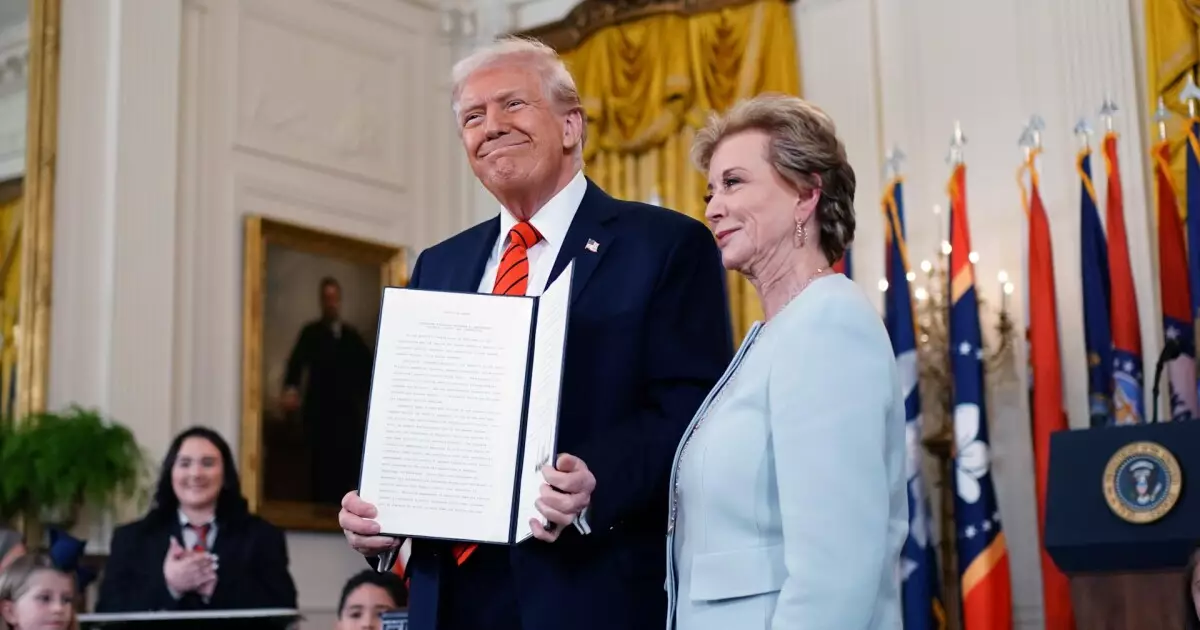The recent lawsuit initiated by California, New York, and 14 other states against the Trump administration unveils a grim reality that often gets overshadowed by political rhetoric: our educational system is in peril. As schools across the nation strive to recuperate from the devastating learning losses exacerbated by the pandemic, the abrupt curtailment of federal funds aimed at fostering recovery signals a significant and distressing policy blunder. It’s not merely a matter of financial support; it encapsulates a broader, systematic disregard for the future of American education and its young minds.
California Attorney General Rob Bonta’s words resonate strongly: this is not just about a few lost dollars; it is a manifestation of a deeper ideological conflict that suggests the current administration has abandoned the educational needs of children. The abrupt termination of the American Rescue Plan Act funds, which provided hundreds of millions in taxpayer money to schools, is in stark contrast to the needs of the students grappling with loss and uncertainty. An educational crisis is unfolding, and our leaders seem woefully indifferent, as evidenced by actions stripping financial resources away from the very institutions designed to uplift and educate.
Unmoorings in Educational Policy
In a letter issued by Education Secretary Linda McMahon, the Department of Education indicated that the extensions on COVID-19 relief grants would no longer be honored, representing a stark deviation from prior commitments. This decision lacks not only clarity but also a coherent rationale. The idea that extending the use of taxpayer funds could somehow be misaligned with the Department’s priorities exhibits a troubling inability to reconcile the urgent needs of our schools with bureaucratic priorities. There’s a chilling disconnect when federal officials dismiss the prospects of vulnerable students simply because policy changes fail to prioritize educational recuperation.
Moreover, the broader implications of this decision extend beyond immediate funding cuts—Moody’s Ratings has indicated that this kind of rapid policy retraction creates tangible risks for both traditional K-12 schools and charter institutions. This is a reality nobody in the education sector can afford to ignore. This trend of undermining support for educational programs recalls past instances of executive actions aimed at dismantling the Department of Education, placing the entire organizational structure—and the generations it serves—at risk.
A Coalition for Change: The Legal Battle Ahead
The implications of this lawsuit are profound. On one hand, it symbolizes a coalition bound not just by a fight for educational funding, but also by a shared acknowledgment that the landscape of public welfare, especially in education, is under siege by ideologically driven policies. The argument posed by the Attorney Generals in their lawsuit is not simply about reinstating funding; it is about holding the Administration accountable for its abrupt policy actions that contravene the Administrative Procedure Act. This could fissure the already fragile trust between states and the federal government and may lead to more extensive consequences regarding how educational policies are enacted in the future.
The data is clear: California alone stands to lose over $200 million earmarked for afterschool programs, mental health services, and educational technologies, vital for any meaningful recovery post-pandemic. Similarly, New York faces a $134 million deficit that will devastatingly impact programs designed to help students rebound from lost instructional time. This isn’t just financial jargon; this is about real kids and educators who depend on these resources for their safety, well-being, and future prosperity.
Politics and Education: A Dangerous Disconnect
As we assess the motivations behind the Trump administration’s decision, it becomes evident that there exists a dangerous disconnect between political decisions and the realities faced by those in the educational sector. The idea that education is somehow secondary to other federal “priorities” is nave and does not consider the holistic development of society fostered through rigorous educational programs. When leaders espouse cutting back on financial support without a robust plan to maintain educational stability, it raises critical questions about their long-term commitment to nurturing the next generation.
As the lawsuit progresses, it highlights a desperate need for more than just temporary funding; it necessitates a nationwide conversation about the direction of education policy in America. With public education at a crossroads, the onus is now on both state leaders and the administration to put political gain aside and refocus on what should be their primary priority: the education and future of American children.

